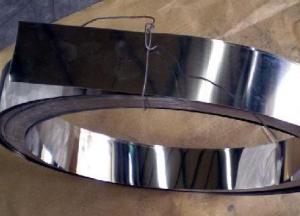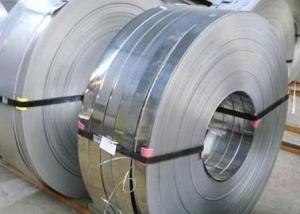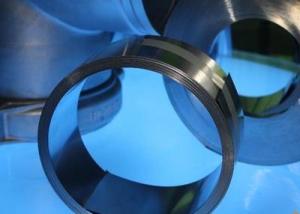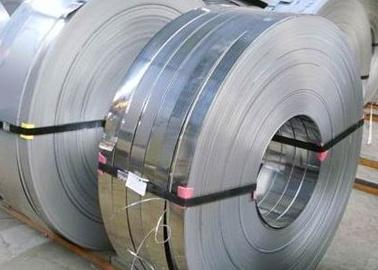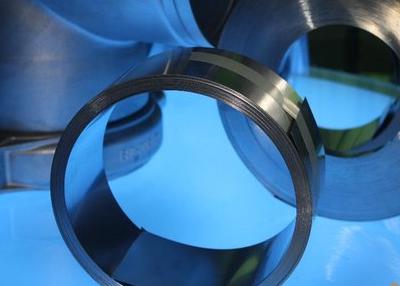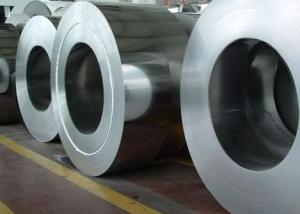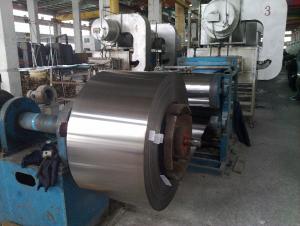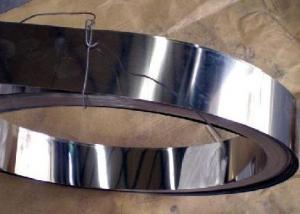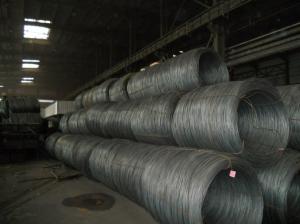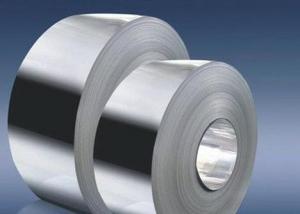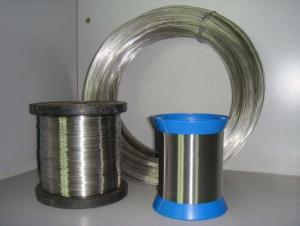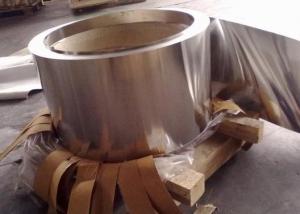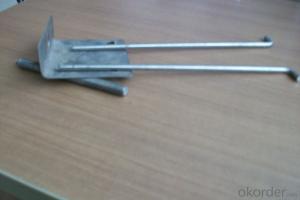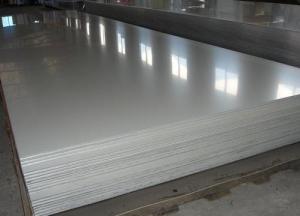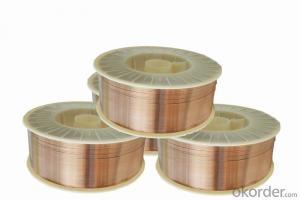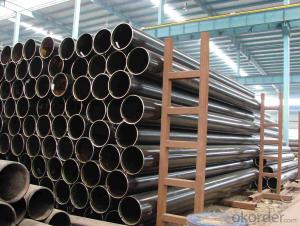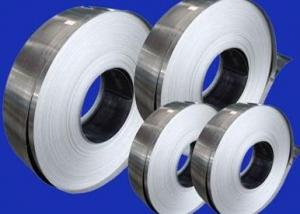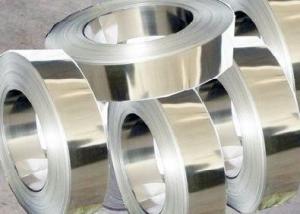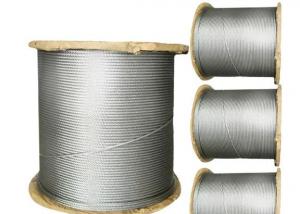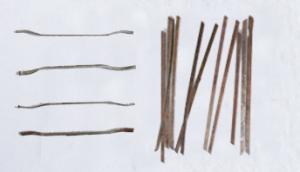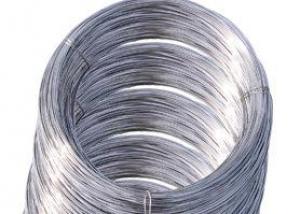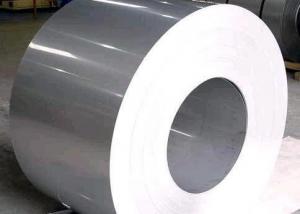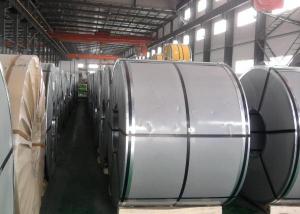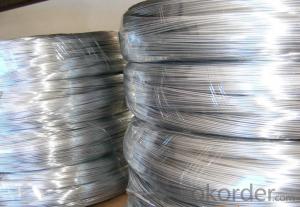420 Stainless Steel Strips
- Loading Port:
- China Main Port
- Payment Terms:
- TT or LC
- Min Order Qty:
- 1 Ton m.t.
- Supply Capability:
- 2000 Tons Per Month m.t./month
OKorder Service Pledge
OKorder Financial Service
You Might Also Like
420 Stainless Steel Strips
1. Chemical composition
|
C |
Si |
Mn |
P |
S |
Ni |
Cr |
|
0.16-0.25 |
max1.00 |
max1.00 |
max0.04 |
max0.03 |
--- |
12.00-14.00 |
2. Mechanical properties
|
Yield Strength |
Tensile |
Elongation |
Hardness (HV) |
Hardness (HRB) |
|
≥225 |
≥520 |
≥ 18 |
≥234 |
≥97 |
3. Standard: AISI, ASTM, GB, EN, DIN, JIS
4. Surface: 2B, NO.1, BA, NO.4, Hairline, SB, Mirror finish, Anti-skid, Cherkered etc.
5. Size: Thickness: 0.3-3mm (cold rolled), 3-40mm (hot rolled)
Width: 1000mm or 1219mm or 1240mm for cold rolled, 1500mm for hot rolled.
Length: As customers' request.
6. MOQ: 1 Ton
7. Payment terms: T/T or L/C
8. Packing: Seaworthy package with wooden or Iron pallets with the paper and the steel strip, or as customers' request.
9. Delivery time: Usually about 7 days after we confirming the order, or according to your quantity.
If you have any question or demand, pls feel free to contact me.
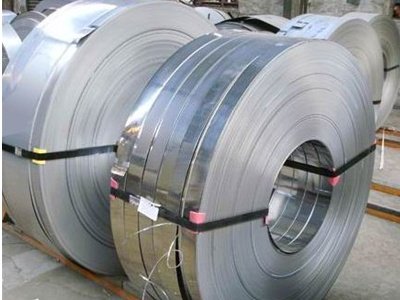
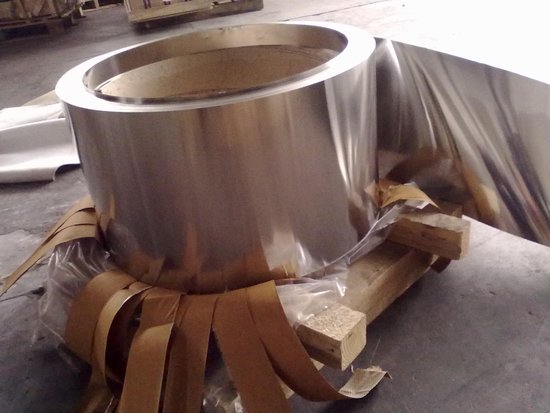
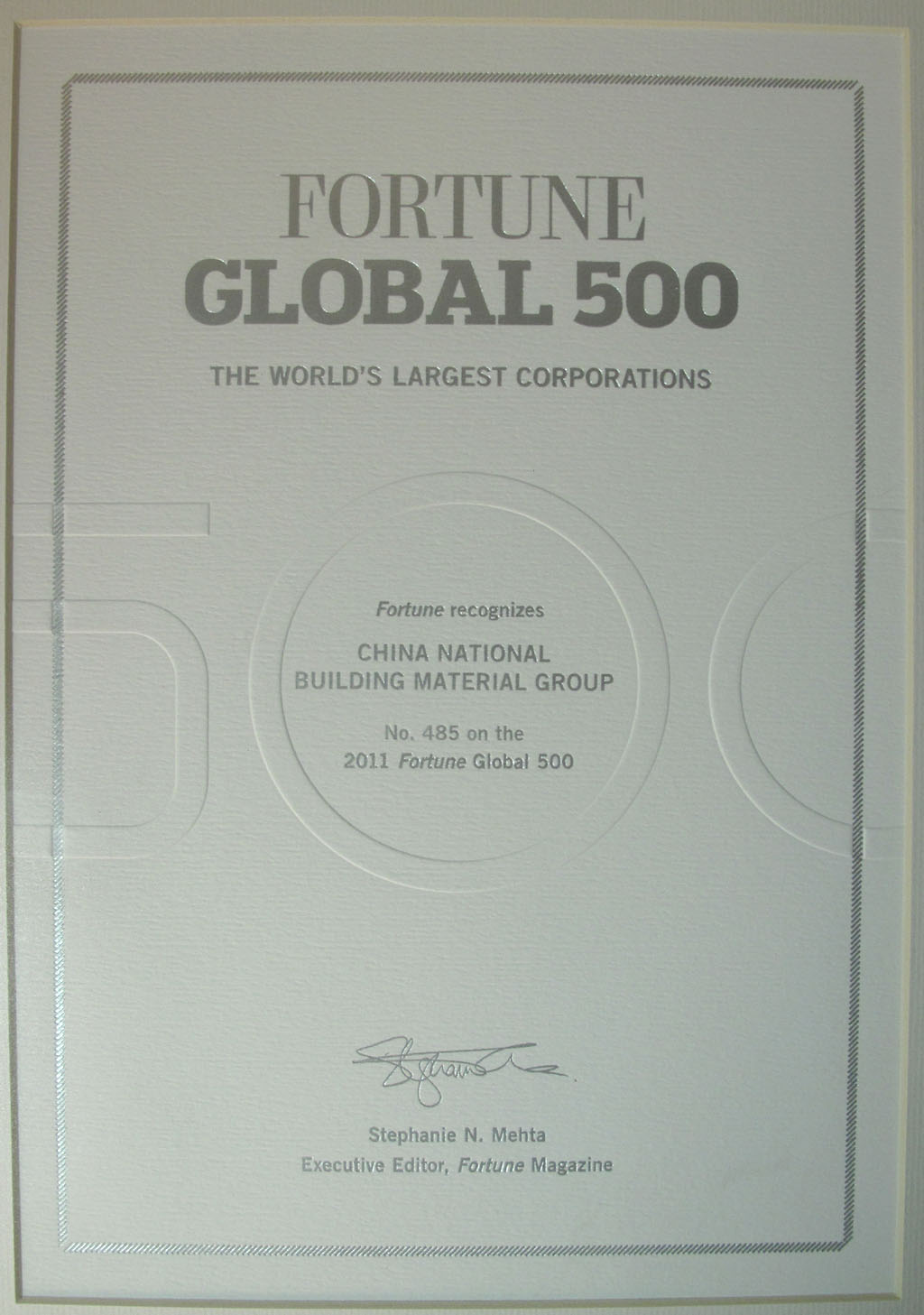
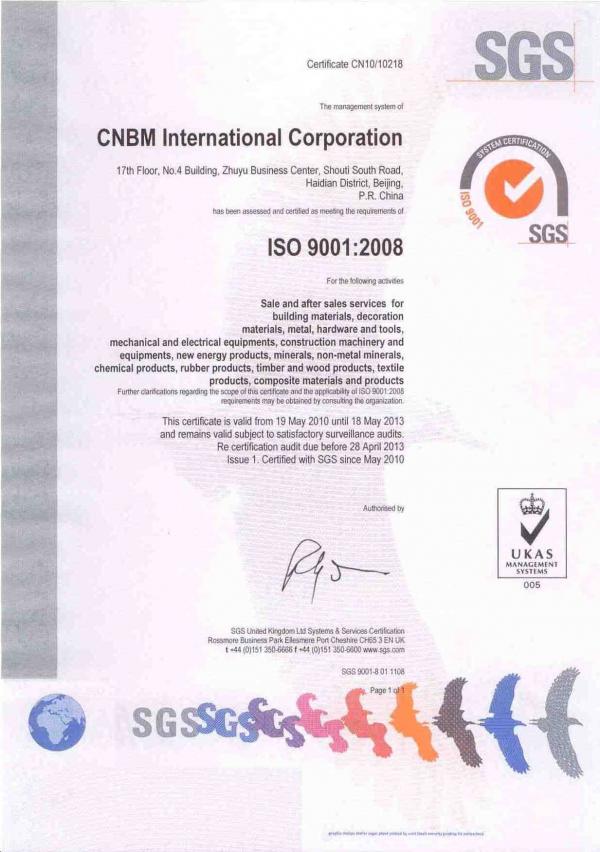
- Q: Can stainless steel wire be used for making jewelry clasps?
- Yes, stainless steel wire can be used for making jewelry clasps. Stainless steel is a popular choice for jewelry making due to its durability, strength, and resistance to corrosion. It is a versatile material that can be easily manipulated into different shapes and sizes, making it suitable for creating various types of clasps such as lobster clasps, spring ring clasps, and toggle clasps. Additionally, stainless steel wire is available in different finishes, including polished, brushed, or plated, allowing for a wide range of design options. Overall, using stainless steel wire for making jewelry clasps ensures the longevity and quality of the finished piece.
- Q: What is the maximum tensile strength of stainless steel 304?
- Japanese standard: SUS304 tensile strength greater than 520N/mm2American Standard: 304 tensile strength greater than 515N/mm2National standard GB/T1220: tensile strength is greater than or equal to 520515MPa
- Q: What are the different types of stainless steel wire rope terminations available?
- There are several types of stainless steel wire rope terminations available, each offering unique advantages and suitability for different applications. Some common types include: 1. Wire Rope Clips: Also known as wire rope clamps, these terminations comprise a U-bolt, saddle, and nuts. They are easy to install and provide a strong and secure connection. Wire rope clips are commonly used for light to medium-duty applications. 2. Swage Fittings: Swaging involves permanently attaching a fitting to the wire rope by compressing it using specialized tools. Swage fittings provide a clean and streamlined termination, ensuring excellent strength and durability. They are often used in heavy-duty applications and critical load-bearing situations. 3. Thimbles: Thimbles are metal sleeves that are inserted into the eye or loop of the wire rope to protect it from abrasion and wear. They help maintain the rope's shape and enhance its longevity. Thimbles can be used in conjunction with wire rope clips or swage fittings for added reinforcement. 4. Turnbuckles: Turnbuckles are adjustable fittings consisting of two threaded eye bolts connected by a metal body. They allow for easy tensioning and adjustment of the wire rope, making them ideal for applications that require periodic tightening or fine-tuning. 5. Nicopress Sleeves: Nicopress sleeves, also known as compression sleeves, are made of aluminum or copper and are used with a special tool to compress and secure the wire rope. They provide a reliable termination for light to medium-duty applications and are commonly used in marine and architectural applications. It's important to select the appropriate termination based on the specific requirements of your application, such as load capacity, environmental conditions, and desired level of permanence. Consulting with a knowledgeable supplier or engineer can help ensure the right choice for your stainless steel wire rope termination needs.
- Q: What's the difference between galvanized iron wire and stainless steel wire?
- Stainless steel wire is chromium containing without nickel, also known as Cr stainless steel wire, there is a certain corrosion resistance. Stainless steel, generally considered ferromagnetic, mainly refers to the 1Cr17 (ferrite) series and 1Cr13 (martensite) series, while Fe is not ferromagnetic in the presence of austenite.
- Q: Can stainless steel wire be used for wire jewelry making?
- Yes, stainless steel wire can definitely be used for wire jewelry making. It is a popular choice among jewelry makers due to its durability, strength, and resistance to tarnish. Stainless steel wire is available in different gauges, making it suitable for various jewelry-making techniques such as wire wrapping, wire weaving, and creating intricate designs. It is also versatile and can be used to create a wide range of jewelry pieces, including necklaces, bracelets, earrings, and even rings. Additionally, stainless steel wire is hypoallergenic, making it a great option for individuals with sensitive skin or allergies to other metals.
- Q: What are the different types of stainless steel wire ropes used in cranes?
- Cranes commonly utilize various types of stainless steel wire ropes. Here are some examples: 1. The 7x7 Stainless Steel Wire Rope consists of seven strands, each comprising seven wires. It offers a balance between strength and flexibility, making it suitable for overhead cranes and similar applications that require both qualities. 2. Similar to the 7x7 construction, the 7x19 Stainless Steel Wire Rope has 19 wires in each strand. It provides better flexibility and is commonly used when the wire rope needs to bend around pulleys or sheaves. 3. The 6x19 Stainless Steel Wire Rope features six strands, each made up of 19 wires. It offers a favorable combination of strength and flexibility, catering to a wide range of crane applications. 4. For heavy-duty lifting applications, such as in large overhead cranes or gantry cranes, the 6x36 Stainless Steel Wire Rope is often preferred. It consists of six strands, each containing 36 wires, providing excellent strength. 5. The 1x19 Stainless Steel Wire Rope is characterized by a single strand with 19 wires. It offers high strength and minimal flexibility, making it suitable for tower cranes and applications that require a rigid and stable rope. These examples illustrate the diversity of stainless steel wire ropes used in cranes. Choosing the appropriate wire rope depends on factors like the specific application, load requirements, and environmental conditions. Careful selection ensures the safe and efficient operation of the crane.
- Q: What are the different wire shapes available in stainless steel wire?
- Stainless steel wire comes in various wire shapes, each with its own distinctive features and uses. The most common wire shapes include round wire, flat wire, square wire, and shaped wire. Round wire is the simplest and most widely utilized shape. It is versatile and suitable for a range of applications such as springs, mesh, and fencing. Its availability in various diameters allows for customization based on specific requirements. Flat wire, as the name implies, has a flat cross-section. It is frequently employed in applications where a low profile or limited space is essential, such as electrical connectors, screens, and micro springs. Square wire possesses a square cross-section, providing greater strength and stability compared to round wire. It is often utilized in applications requiring structural support or a more rigid wire, such as jewelry making and architectural uses. Shaped wire refers to wire that has been specially shaped or formed to meet specific design requirements. This can include wire with custom profiles like triangle, hexagon, or oval shapes. Shaped wire finds extensive use in specialized industries like automotive, aerospace, and medical, where precise specifications and unique designs are crucial. Apart from these basic shapes, stainless steel wire can undergo additional processing or modification techniques like annealing, tempering, and coating, which can enhance its properties and performance in specific applications. When selecting the appropriate wire shape, it is important to consider the specific needs and requirements of your project, as each shape offers distinct benefits and characteristics.
- Q: Is stainless steel wire resistant to chemical exposure?
- Yes, stainless steel wire is highly resistant to chemical exposure. Stainless steel is known for its excellent corrosion resistance, making it suitable for various applications where it may come into contact with different chemicals. It has a protective oxide layer that forms on its surface, which helps prevent the wire from reacting with chemicals and corroding. This resistance to chemical exposure makes stainless steel wire a preferred choice in industries such as chemical processing, pharmaceuticals, food and beverage, and many others. However, it is important to note that the specific grade and composition of stainless steel can impact its resistance to certain chemicals, so it is crucial to select the appropriate stainless steel grade based on the type of chemical exposure it will encounter.
- Q: What's the difference between stainless steel tube polishing and stainless steel wire drawing?
- Polishing machine is equipped with polishing wheel. When polishing, polishing wheel rotation speed steel surface and the polishing wheel friction heat pipe to improve the plasticity, polishing force, surface plastic deformation, the convex part is down, and flow to the concave, the surface roughness decreases. In addition, the chemical composition of the polishing tube and the polishing medium are chemically reacted with the polished metal during the polishing process, so that the polishing effect is greatly enhanced.
- Q: Can stainless steel wire be used for tie wire applications?
- Stainless steel wire is indeed suitable for tie wire applications. Renowned for its exceptional resistance to corrosion, durability, and strength, stainless steel proves to be an outstanding option for such purposes. Its utilization is widespread in construction, landscaping, and various other industries that necessitate the use of a resilient and enduring tie wire. The rust-resistant nature of stainless steel tie wire empowers it to withstand even the harshest environmental conditions, guaranteeing its reliability and durability. Moreover, the availability of stainless steel wire in diverse sizes and gauges grants the flexibility and customization required to meet specific tie wire needs.
1. Manufacturer Overview
| Location | Shandong,China |
| Year Established | 2005 |
| Annual Output Value | Above US$5.3 Million |
| Main Markets | Europe, China |
| Company Certifications | ISO9001:2000 |
2. Manufacturer Certificates
| a) Certification Name | |
| Range | |
| Reference | |
| Validity Period |
3. Manufacturer Capability
| a) Trade Capacity | |
| Nearest Port | Tian Jin |
| Export Percentage | 30% |
| No.of Employees in Trade Department | 40 People |
| Language Spoken: | English;Chinese |
| b) Factory Information | |
| Factory Size: | Above 50,000 square meters |
| No. of Production Lines | Above 8 |
| Contract Manufacturing | OEM Service Offered;Design Service Offered |
| Product Price Range | Average |
Send your message to us
420 Stainless Steel Strips
- Loading Port:
- China Main Port
- Payment Terms:
- TT or LC
- Min Order Qty:
- 1 Ton m.t.
- Supply Capability:
- 2000 Tons Per Month m.t./month
OKorder Service Pledge
OKorder Financial Service
Similar products
Hot products
Hot Searches
Related keywords
